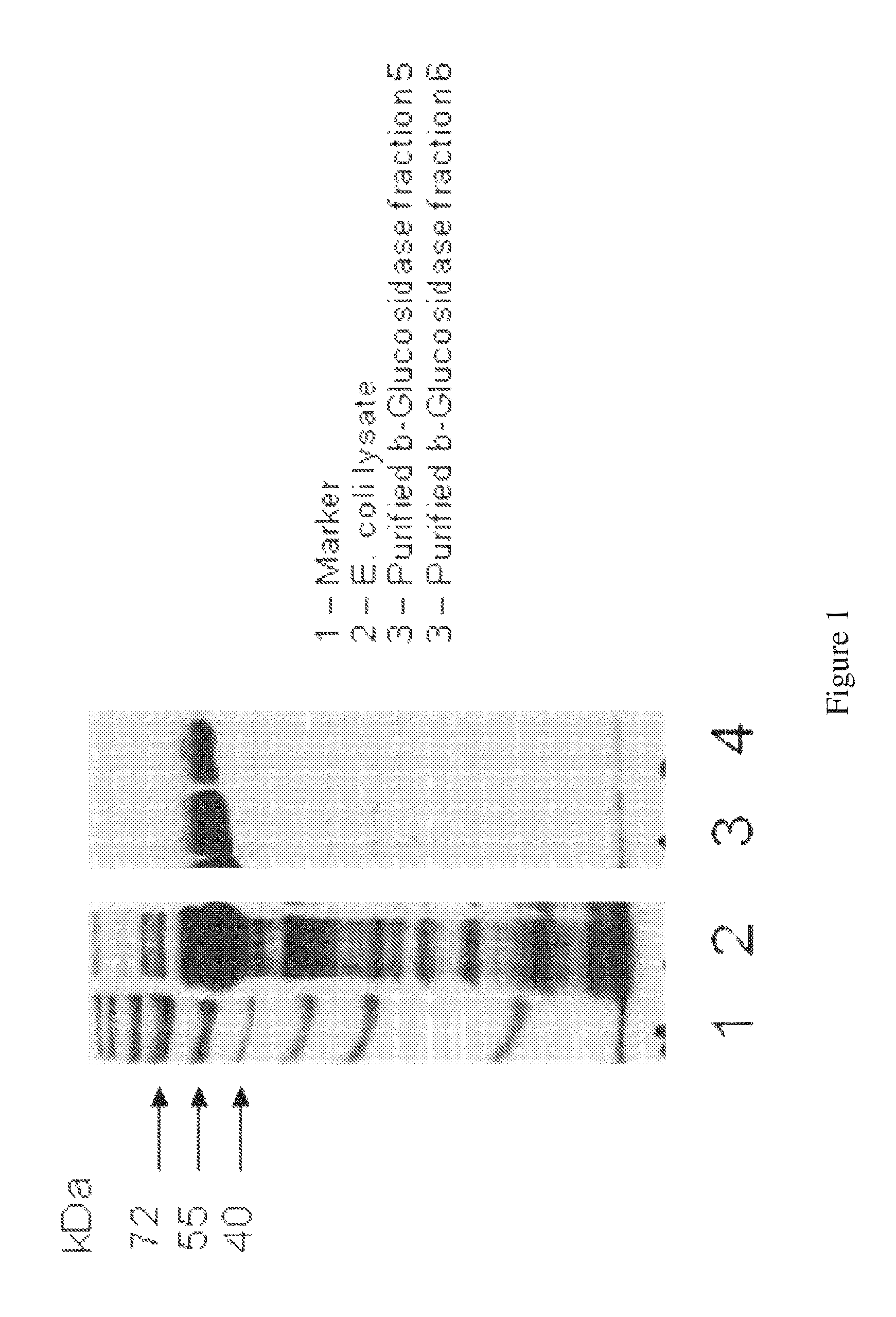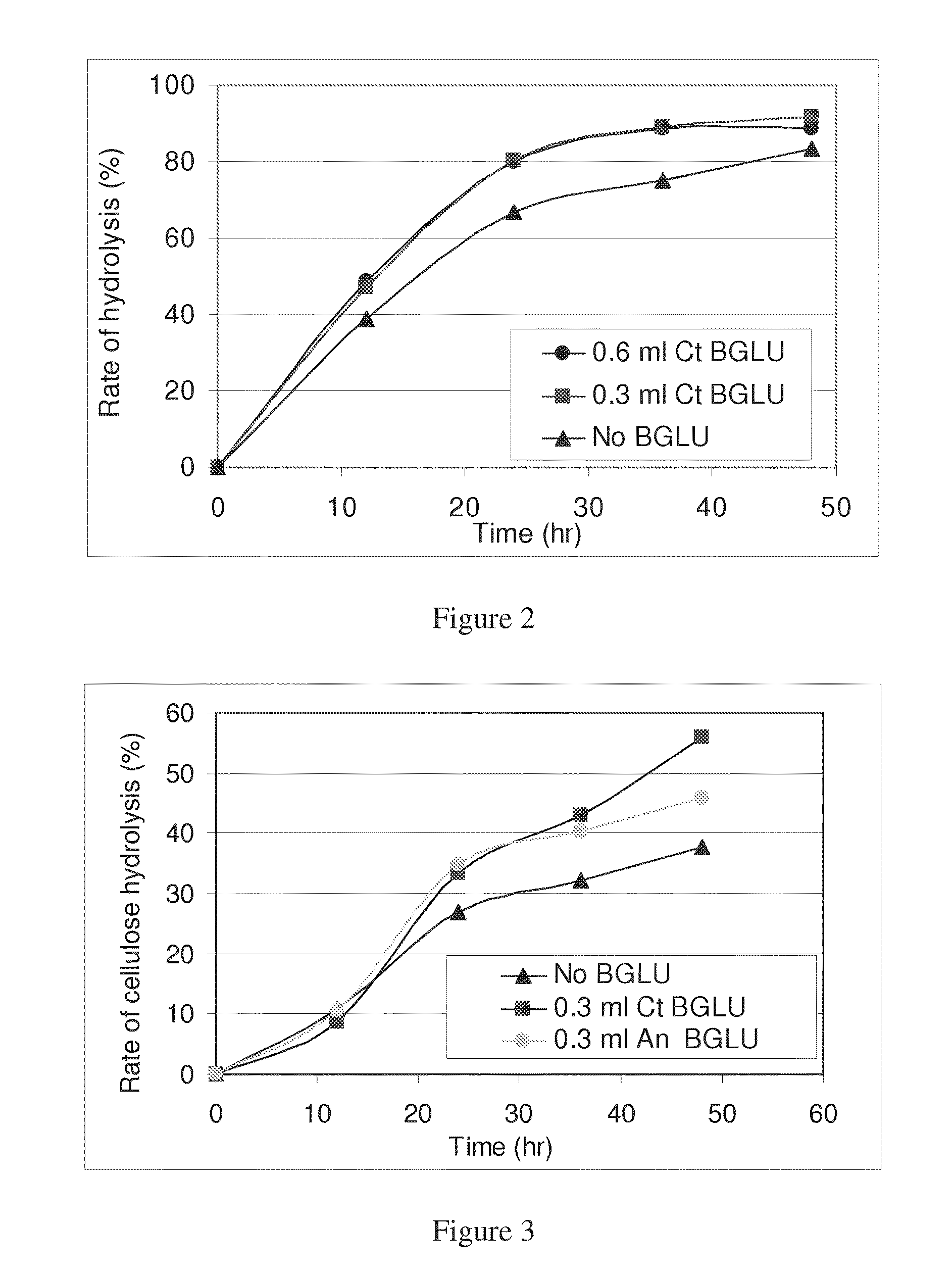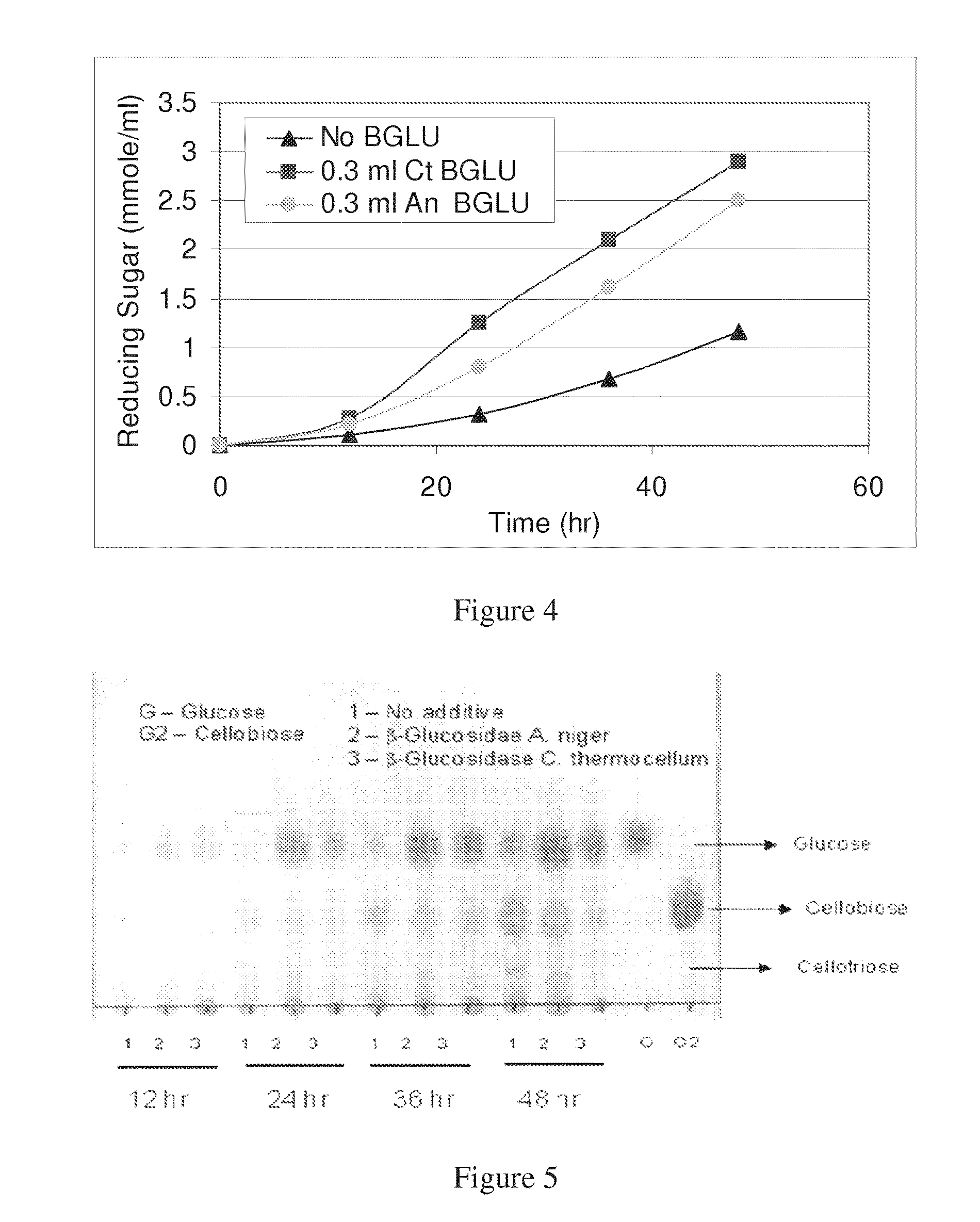Methods and compositions for enhanced bacterial hydrolysis of cellulosic feedstocks
a cellulosic feedstock and bacterial technology, applied in the preparation of sugar derivatives, enzymes, sugar derivatives, etc., can solve the problems of significant slowdown, unfavorable bacteria's energy, and inability to utilize external glucose as carbon and energy sources by cellulolytics, and achieve the effect of more reducing sugars
- Summary
- Abstract
- Description
- Claims
- Application Information
AI Technical Summary
Benefits of technology
Problems solved by technology
Method used
Image
Examples
example 1
Cloning, Expression and Purification of a Recombinant C. Thermocellum BETA-Glucosidase (B21A) Protein
[0101]A plasmid containing the gene encoding the BETA-glucosidase of the Clostridium thermocellum cellulosome (SEQ ID NO: 1; FIG. 1) was used to transform E. coli strain BL21 (DE3; Novagen, WI, USA). Transformed cells were grown on LB medium with appropriate antibiotics and IPTG (for induction) for 3-5 hr at 37° C. The cell culture was centrifuged, resuspended in Tris buffer (50 mM, pH 7.2), sonicated, and re-centrifuged. BETA-glucosidase was purified as described in the Methods section, yielding highly purified protein (FIG. 1, lanes 1-4). The molecular weight of the purified product was in agreement with the theoretical calculated value.
example 2
Addition of External BETA-Glucosidase Enhances Hydrolysis of Microcrystalline Cellulose by C. Thermocellum
[0102]The effect of adding exogenous C. thermocellum BETA-glucosidase on the bacterial hydrolysis of microcrystalline cellulose (MC) by C. thermocellum was evaluated using two different amounts of BETA-glucosidase, under standard growth conditions, i.e., MC at 21 gr per liter of growth medium (g / L). 25 ml serum flasks with 15 ml growth medium and 2.1% MC w / v were inoculated with 1 ml C. thermocellum inoculum that had been grown on cellobiose, and the flasks were allowed to acclimatize for 1 hr under continuous agitation at 60° C. 0.3 or 0.6 ml of recombinant C. thermocellum BETA-glucosidase or PBS (negative control) was added into the flask. Flasks were mixed, and a 3-ml. sample from each flask was withdrawn using a sterile syringe. Flasks were allowed to incubate under the same conditions and were sampled every 12 hr. Withdrawn samples were washed, and residual cellulose was ...
example 3
The Effect of the Source of the BETA-Glucosidase and the Initial Amount of Substrate on Hydrolysis of Microcrystalline Cellulose by C. Thermocellum
[0105]The next experiment compared the effect of C. thermocellum BETA-glucosidase vs. commercial purified BETA-glucosidase from A. niger (Novozymes) on the hydrolysis rate of MC by C. thermocellum. In this and subsequently reported experiments, a concentration of 21 g / L of cellulose was utilized, except where otherwise indicated. The activities of the A. niger and C. thermocellum enzymes were compared using the chromomeric substrate PNPG, the results of which were used to normalize the amounts added to the growth medium in order that equal specific activities were added. Since the specific activities of the two enzymes were found to be the same, equal amounts of the two enzymes were added. 25 ml flasks containing 15 ml growth medium were inoculated with 1 ml C. thermocellum and allowed to acclimatize for 1 hr under continuous agitation ...
PUM
| Property | Measurement | Unit |
|---|---|---|
| concentration | aaaaa | aaaaa |
| temperature | aaaaa | aaaaa |
| soluble sugar content | aaaaa | aaaaa |
Abstract
Description
Claims
Application Information
 Login to View More
Login to View More - R&D
- Intellectual Property
- Life Sciences
- Materials
- Tech Scout
- Unparalleled Data Quality
- Higher Quality Content
- 60% Fewer Hallucinations
Browse by: Latest US Patents, China's latest patents, Technical Efficacy Thesaurus, Application Domain, Technology Topic, Popular Technical Reports.
© 2025 PatSnap. All rights reserved.Legal|Privacy policy|Modern Slavery Act Transparency Statement|Sitemap|About US| Contact US: help@patsnap.com



